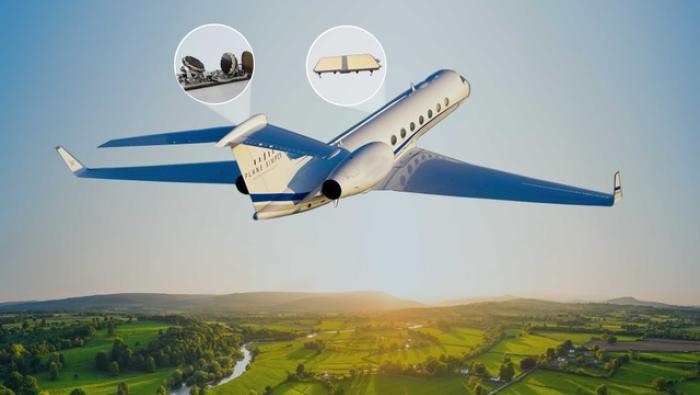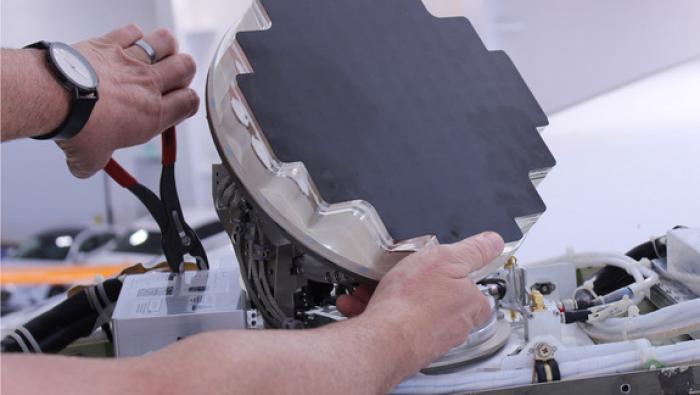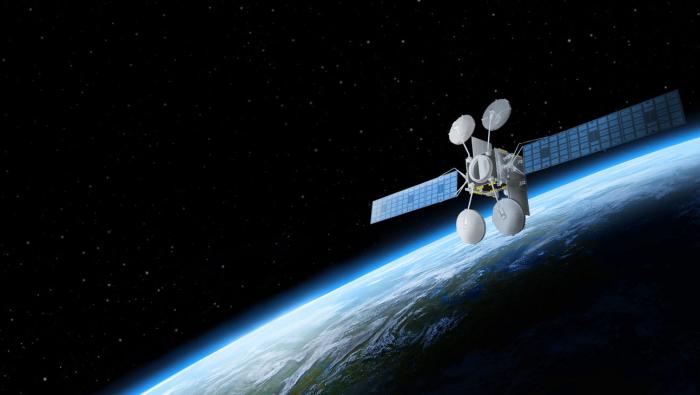Because of the COVID-19 pandemic, the first quarter of 2020 saw internet usage surge 47 percent, according to the Infinera Corporation. Record numbers of businesses and households have surpassed one billion bytes (one terabyte) of data usage in a single month.
When it comes to staying ahead of emerging opportunities, fast connectivity isn’t fast enough for today’s global business leaders. By uncapping its new-generation Ka band network, Viasat is now delivering unparalleled capacity, reliability, and cabin connectivity at speeds of up to 80 megabits per second (Mbps)—and more.
While no two entrepreneurs or chief executives are alike, they virtually all share one personality trait: they don’t like restrictions. Success is all about pushing the envelope to go as hard and fast as possible.
You can’t put a cap on that kind of drive. But, unfortunately, a tool that every business leader relies on to get ahead may be doing just that. That tool is high-speed cabin connectivity. The typical bizjet Wi-Fi service provider caps its speed at 10, 15 or 20 Mbps. That’s fast, but not fast enough.
Viasat has taken down its old Mbps speed limit signs. By lifting the speed cap on its Ka band network, the company is delivering cabin connectivity speeds approaching 80 Mbps.
“We are now able to deliver the fastest speeds and the best online experience to every business aircraft connected to our Ka band network,” said James Person, senior director of business development, Viasat business aviation division. “There are other Ka band satellites out there, but Viasat is able to get much more usable capacity out of that spectrum on its own satellites than anyone else.”

Just what is Ka band?
As Person explained, Ka band and Ku band are simply parts of the electromagnetic spectrum, just as red and green are parts of the visual spectrum. Ku means K-under, the band just underneath the “short” or K band. Ka stands for K-above—just above the K band.
“Ka is in a higher frequency range, and there’s up to seven times more bandwidth available for aviation connectivity,” Person said. “Because we design and build our own Ka band satellites, we start with that additional spectrum as our palette and add onto that with some incredible innovations to maximize network capacity.
“Maximizing capacity leads to higher network speed, and that speed is what leads to a better user experience for business aircraft passengers and crew,” Person added. “That’s the bottom line: people don’t care how fast a network is; they just want the same online experience in the air as they get on the ground.”
But, you ask, if other service providers have Ka band satellites, how is Viasat able to deliver such an enhanced experience? Unfortunately, the answer is very involved and, well, secret. But Person did offer an analogy to help put the system’s capabilities in perspective.
“Say you connect a garden hose to a faucet,” he said. “There’s plenty of water if you’re the only one using it. But, if other people connect hoses to the same faucet, the water flow rate is going to slow way down for you. That’s why other providers cap their top speeds.
“By maximizing bandwidth, Viasat Ka allows its satellites to have huge data capacity,” Person continued. “So, no matter how many people use it, there’s still plenty to go around. In our case, it’s less of an issue about what the frequency band is; it’s more about how our satellites take advantage of that available bandwidth to maximize capacity and speed. That is our differentiator.”
An airborne Autobahn
Like Germany’s Autobahn, which has long attracted speed-loving automotive enthusiasts from around the world, Viasat’s Ka band high-speed network has been a draw for serious airborne internet users since its launch.
“Viasat Business Aviation already has a unique offering for all of our Ka band customers,” Person explained. “No matter which plan they have—from the smallest, regional CONUS [continental U.S. only] plan to our largest 100 gigabyte plan—they have all enjoyed the same network speeds. Like other providers, we had a cap on those speeds—ours was 16 megabytes per second—pretty fast.
“But, because our satellites have so much capacity—a lot more than anyone else offers—and because our customers’ expectations and needs keep growing, we’ve now removed those speed limits,” he added. “We’ve opened up the speeds on our Ka band services to whatever is available on the network at that time.”
Person said that the company recently held an unofficial speed contest on its social media outlets, asking Ka band customers to post photos of their cabin connectivity speeds.
“So far, the fastest we’ve seen was in the cabin of a Gulfstream G280,” he said. “They did the speed test and got 80 megabits per second. Their post said the principals were enjoying better high-speed connectivity on the airplane than they got on their home networks. That’s pretty significant.
“We can’t promise that they’ll always see 80 Mbps,” Person added, “but we feel confident that everyone on the Ka band network at any given time will see speeds over 20 Mb per second. And as we continue to upgrade and add satellites, that number will continue to rise.”
He said that while Viasat’s current satellite capacities are measured in the hundreds of gigabytes per second and growing, the company’s competition Ka band satellites are still in the single-digit Gbps range.
“We’re already two orders of magnitude larger and will soon grow that by three or four times,” Person stated. “So, with uncapped service, we’re seeing up to 80 megabits per second, while others are offering 20 at the very top. We’re four times faster at the top end and we’re going to go faster.”
Right now, the company is on schedule to start launching its next constellation of satellites, ViaSat-3, in 2021. When operational, those satellites will increase the network from its current level of 500 Gbps up to an astonishing 3,500 Gbps—three and a half terabits per second—worth of capacity.

Free unlimited streaming
As Person mentioned earlier, Viasat’s goal from uncapping its Ka band network is to ensure its customers the most enjoyable experience possible, especially regarding high bandwidth uses like video streaming.
“Video streaming and video conferencing are more important to our business aviation customers now than ever before,” he said. “The added speed we offer will ensure that video will flow smoothly with no spinning wheels or delays. Faster download and upload times also means large files will move quickly, and video-heavy websites will snap right on. It’s a way better experience.
“Our uncapped capacity also allows us to offer our Ka band customers a unique option called Unlimited Streaming,” Person added. “It lets customers subscribe to whatever streaming service they want—YouTube, Disney+, Netflix, Bloomberg, news, or whatever—and none of that content counts towards their monthly data allocation.
“No one else can offer that, and again, it goes to the heart of network capacity,” he said. “It’s a powerful, value-adding service option.”
Massive data is now available to super-midsize cabins
Another key Viasat differentiator that Person stressed was that the higher Ka band speeds are available to operators in a wide range of cabin sizes.
“Thanks to the compact size of our antenna and LRU, the Viasat Ka band network is available to operators of super midsize jets like the Gulfstream G280, Embraer Praetor, Challenger 350, up to large-cabin jets,” he said. “It’s available as a line-fit option, or you can get it installed by one of a number of well-known MRO facilities.
“The good news is, all of our current Ka band hardware is forward compatible with our next-generation of services,” Person added. “A big part of delivering the best possible user experience today is ensuring the customer’s investment is protected into the future.”
Learn more about Viasat Business Jet Wi-Fi at: Viasat.com/business-aviation
Contact the Viasat Business Aviation team:
Tel: 1-760-476-4755
business-aviation@viasat.com









